Febrile Infection-Related Epilepsy Syndrome (FIRES) is a subcategory of New Onset Refractory Status Epilepticus (NORSE) in which status epilepticus (SE) develops in a previously healthy child.
This happens between 2 days to 2 weeks, often following illness with fever, or following from other fever symptoms. Febrile relates to temperature so in FIRES temperature has a role in the new onset of SE, but may not still be evident when the seizures start.
Seizures are usually focal or multifocal in origin, arising from multiple areas of the brain, but these can become focal to bilateral tonic clonic seizures and progress to being continuous and difficult to control. FIRES is very rare typically affecting about 1 in 1 million children from 2-17 years, with more boys affected.
While NORSE and FIRES mostly affect children and young people who are otherwise well, they can also develop across all age ranges. FIRES was previously known as Devastating encephalopathy in school aged children (DESC) and acute encephalitis with refractory repetitive partial seizures (AERRPS).
Cause
The cause of FIRES is unknown but may be linked to inflammation response to illness with possible autoimmune factors.
Symptoms of FIRES
Seizures begin suddenly in the acute phase which can be between 24 hours to 2 weeks after a febrile illness such as chicken pox, or a upper respiratory tract infection (URTI), and these are nearly continuous, progressing to SE. This phase can last for weeks or months.
Diagnosis
Diagnosis is clinical based on history and physical exam and a series of exclusionary test to rule out other causes e.g. metabolic, genetic or infectious. Standard tests such as CT brain scans and initial MRI can be helpful to rule out structural causes for seizures, and blood tests and lumbar punctures can rule out infectious and immune mechanisms. Ictal EEG and prolonged EEG (telemetry) can pick up the characteristic ‘delta brush’ features that denote FIRES and the continuing SE seizures.
Treatment
As with NORSE, there is no standard treatment for FIRES. Prolonged intensive care may be required. SE can lead to neurological and medical complications, prolonged unconsciousness and need for assistance with breathing. Treatment for SE is usually from a range of benzodiazepines and barbiturates. Reports in a small number of cases suggest a role for the Ketogenic Diet and for treatment for inflammation, but more research is needed to confirm this.
Outcome
Seizures may decrease in time but may not respond fully to treatment. These may be either focal or generalised in origin. Developmental and neurological impacts such as epilepsy and memory impairment can result. A third will have normal or near normal cognition, a third will have mild to moderated cognitive impairment and a third will have severe to profound disability. Younger age of onset and longer duration of medically induced coma are linked to poorer outcomes. Survival rates of 90%, with 10% mortality, have been reported.
Further Information
- Further information on Anti-Seizure Medications and other treatments can be found by visiting the 'Treatment' section of our website.
- Further information on diagnosis can be found by visiting the 'Diagnosis' section of our website.
- Other useful resources surrounding epilepsy can be found throughout our 'Epilepsy Information' section.
- If you need any information or support regarding epilepsy, contact your local Community Resource Officer - you can find their details by visiting the 'Our Local Service' section of our website.
